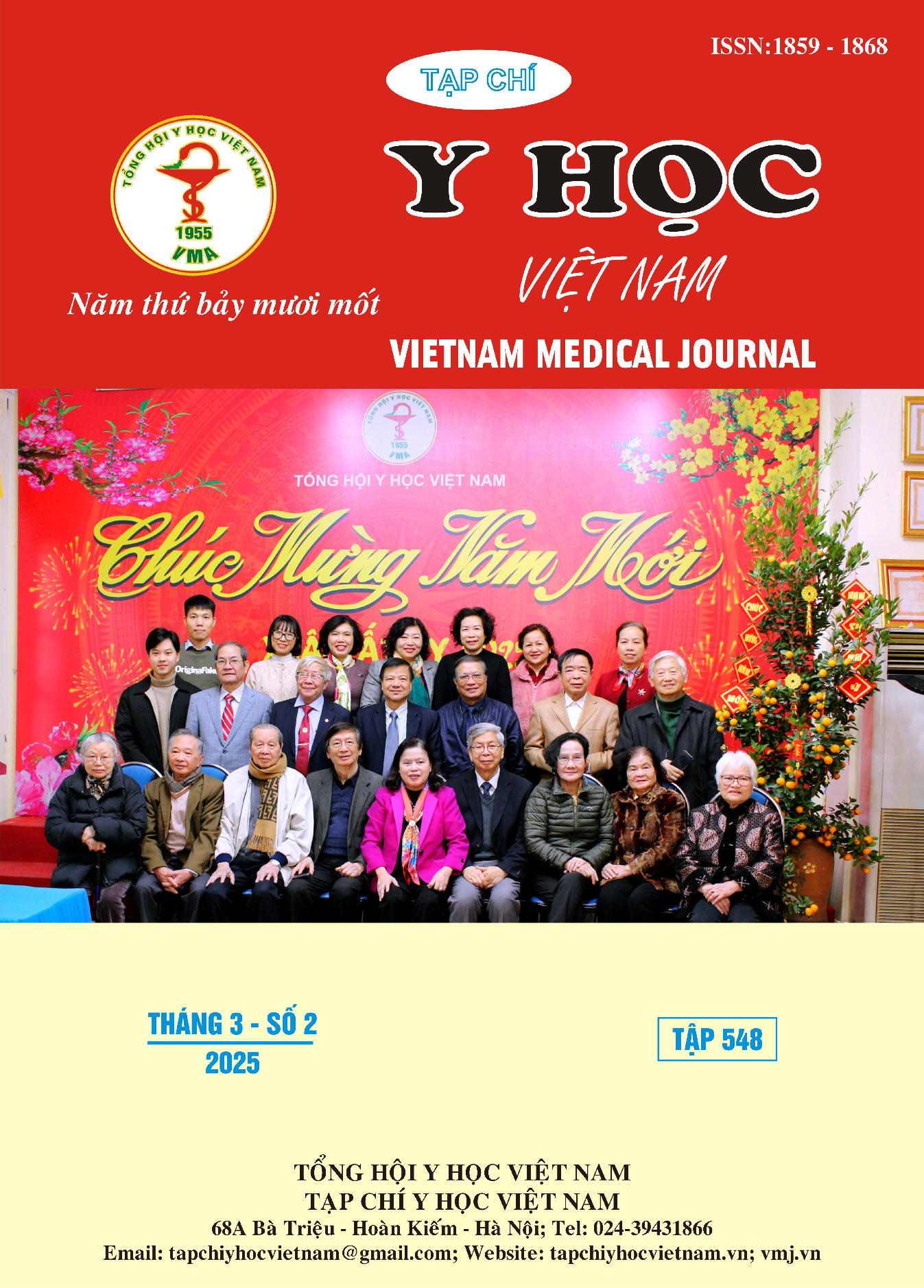RESEARCH ON CLINICAL, SUBCLINICAL CHARACTERISTICS, AND RS3746444 POLYMORPHISM OF MICRORNA-499 GENE IN PATIENTS WITH ACUTE MYOCARDIAL INFARCTION AT CAN THO CENTRAL GENERAL HOSPITAL, 2023–2024
Main Article Content
Abstract
Background: Acute myocardial infarction (AMI) is a severe cardiovascular condition with high mortality rates, associated with multiple risk factors such as hypertension, diabetes, dyslipidemia, smoking, and age. Recent studies have highlighted the role of genetic factors, particularly gene polymorphisms, in the pathogenesis of AMI. The rs3746444 polymorphism in the microRNA-499 gene has been suggested to play a crucial role in the pathogenesis of AMI. However, its significance remains underexplored in the Vietnamese population. Objectives: To investigate the clinical and paraclinical characteristics and the role of the rs3746444 polymorphism in the microRNA-499 gene in patients with acute myocardial infarction. Subjects and Methods: 75 patients diagnosed with acute myocardial infarction, a cross-sectional descriptive study analyzing clinical, paraclinical, and genetic data, focusing on the rs3746444 polymorphism in the microRNA-499 gene. Results: Most patients were male (73.3%) with a mean age of 64.73 ± 10.1 years. Key risk factors included hypertension (82.6%), dyslipidemia (85.3%), and smoking (42.6%). Cardiac damage was most commonly observed in the anterior wall (36.5%) and inferior wall (34.7%). Killip class I was predominant (81.3%), and 44% of patients had an ejection fraction (EF) ≤ 40%. Genetically, allele A (90%) and genotype AA (80%) were dominant, with no homozygous GG genotype observed. Conclusions: This study provides a comprehensive understanding of the clinical and subclinical characteristics of acute myocardial infarction, highlighting prominent risk factors and the severity of the disease. Additionally, the findings demonstrate the potential role of the rs3746444 polymorphism in the microRNA-499 gene in the pathogenesis of AMI. These results not only contribute to enhancing the diagnosis and treatment of AMI but also open opportunities for the development of preventive strategies tailored to the genetic and biological characteristics of individuals.
Article Details
Keywords
Acute myocardial infarction, rs3746444 polymorphism in the microRNA-499 gene.
References
2. Nguyễn Hoàng Giáp, Đặng Đức Minh, Nguyễn Tiến Dũng (2023), "Nghiên Cứu Đặc Điểm Lâm Sàng, Cận Lâm Sàng Của Bệnh Nhân Nhồi Máu Cơ Tim Cấp Điều Trị Tại Bệnh Viện Trung Ương Thái Nguyên", Tạp chí Y học Việt Nam.
3. Ong Văn Phát, Phạm Thanh Phong, Phạm Thị Ngọc Nga (2024), "Đặc Điểm Lâm Sàng, Cận Lâm Sàng Của Bệnh Nhân Nhồi Máu Cơ Tim Cấp Tại Bệnh Viện Đa Khoa Trung Ương Cần Thơ Năm 2022 - 2024", Tạp chí Y học Việt Nam.
4. M. S. Fawzy, E. A. Toraih (2018), "Association of MIR-499a expression and seed region variant (rs3746444) with cardiovascular disease in Egyptian patients", 73 (2), 131-140.
5. S. J. Kim (2021), "Global Awareness of Myocardial Infarction Symptoms in General Population", Korean Circ J, 51 (12), 997-1000.
6. Jung-Hoon Sung, Sang-Hoon Kim,Woo-In Yang (2016), "miRNA polymorphisms (miR‑146a, miR‑149, miR‑196a2 and miR‑499) are associated with the risk of coronary artery disease", Molecular Medicine Reports.
7. Cunrong Chen, Huashan Hong, Lianglong Chen (2022), "Association of microRNA Polymorphisms with the Risk of Myocardial Infarction in a Chinese Population", Tohoku J Exp Med.


